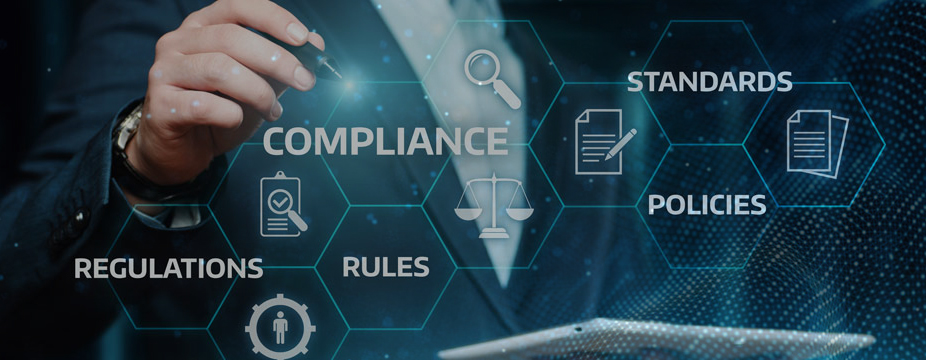|
Getting your Trinity Audio player ready...
|
AI in e-Governance has been a buzz since the United Nations called on its members to integrate intelligent applications and to enhance their governance procedures to act more closely to citizens for offering better services. The UN aims at implementing e-governance to help developing and under-developed countries in saving the cost and time of the government as it can be a better economic growth driving factor. AI and its sub-domain technologies have the potential to ameliorate several existing structural inefficiencies to offer satisfied government functionalities. AI and e-governance could be a revolution in integrating and embedding technologies.
What is e-Governance?
Among the humongous list of government functions and responsibilities, implementation of evolving policies, passing files to various fronts, delivering services, enabling businesses to sustain, maintaining law & order, reducing the cost of living, etc., would be top priorities. The communication and interaction gap between government, the public, and business before enforcing a law, rule, or policy is the biggest barrier. e-governance refers to the strategic integration of intelligent systems to create a simple, moral, accountable, reasonable, responsive, and transparent environment that is comfortable and less costly for interaction between citizens, businesses, and government.
The role of AI in e-Governance?
1. It simplifies the process of gathering and accumulating government information regarding any department to the citizens and businesses.
2. It helps citizens and businesses to participate in the processes of decision-making, before developing or implementing any new law or policy.
3. It is the best way to eliminate corruption by automating the services and ensuring transparency in the information communicated and that it is easily accessible to the public.
4. Ease of availability of government services 24*7 for every citizen through online applications.
5. E-governance helps businesses access information that is important at a click away.
Transforming e-Governance with AI
Even though e-government architecture is integrated with intelligent systems, the improper installation of e-governance architecture can lead to various threats. And few among the list are data privacy and security, regulation issues due to breach in policies, low quality in the continuity, and up-gradation of existing systems due to lack of qualified personnel or trained employees.
AI, at a personal level, can provide sophisticated and more advanced solutions to encounter breaches in e-governance today. AI systems can provide transparency in communication to optimize government functionalities. Detecting anomalies to prevent fraud and secure data to digital assistance, automating manual tasks, etc., are AI applications. And an AI-integrated machine learning system helps to build a resistant e-governance architecture that can surpass the loopholes in the current governance architecture.
How can AI make a difference in the e-governance space?
AI in e-governance can enhance a wide range of applications. And below mentioned are a few ways to show how technological advancements can modernize the antique applications in the existing system for the betterment of governance.
1. Law enforcement:
Enforcing and regulating law is a prominent function in any governance architecture. Embedding AI systems can enhance and automate the existing functionalities, for better implication of law and order. Law enforcement, including facial recognition, speech recognition, drones, robocops, autonomous proto cars, predictive analytics, and cyber defense is emerging and providing delve knowledge about the law violations happening in the modern world. These systems are helping in enclosing and solving issues in less time.
2. Automating routine tasks:
Most of the government systems in developing and underdeveloped countries carry paperwork as an integral part of their governance. Assigning, performing, and passing files between departments can be time-consuming, and at times, it could be nerve-wracking if it is crucial for making important decisions. Hence automating routine tasks reduces paperwork and improves query-response time and saves quality time for government officials to focus on other development issues.
3. Renovating privacy and security mechanism:
The government holds information about the public, government officials, businesses, etc. This information needs to be secured and protected from fraud committers to avoid malfunctions of private information. Integrating AI systems can help in automating and securing information through embedding machine learning algorithms that detect disruptions in the digital database and secure the information from cybercriminals.
4. Rapid disaster response:
Governments responding and enacting during emergencies ( natural calamities or major industrial accidents) could be delayed due to their internal structural hierarchical procedures. With predictive analytics and AI automated systems, the government can forecast the weather and other parameters that help in taking prior action.
5. Maintaining public infrastructure:
Maintaining and governing public infrastructure through digital platforms helps in effective and time-efficient operations. And it includes all those platforms created to address issues to build a better nation. And maintaining an AI-driven public platform has a few advantages at the core. It helps in solving public queries at rapid speed, access to information regarding every government service, people can request any service 24*7, and all the government services are a click away when they need it.
E-governance and AI are digitalizing government services and applications through the amalgamation of public, business, and government practices on one platform. Decisions and law implications are becoming easier than before. Automation and digital disruption are changing the dynamics of governance. The emerging technologies are restoring the applications and revitalizing them to be more public-orientated with changing ecosystem measures. E-governance is reuniting the public with the government by creating more transparency in its operations across all domains. Changing the culture of working with technology towards developing a better technology is changing the outline of governance and making it the best at service on its own.
If you need any help with idea validation, proof-of-concept, Data Science consulting, large-scale AI implementation, Big Data Engineering, or a creative solution for your AI In E-governance data. You are at the right place.
Talk to our experts

